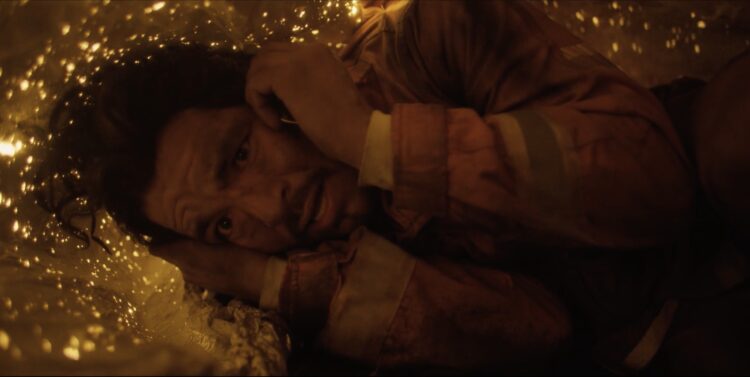Firstly, explain to us the plot of Fireline.
Following denial of early parole, an inmate firefighter desperately tries to call home on an important day while his crew combats a wildfire. Today 30% of CalFire Fire Dept. is supplemented by prison labor despite no clear pathway to employment upon release; FIRELINE is a tribute to the unsung heroes on the frontlines of climate change.
What inspired you to want to tell a story about incarcerated firefighters?
FIRELINE was written and developed with Lena Waithe’s Hillman Grad and Indeed’s Rising Voices Season four. Prompted with a theme that explored, “a vision of the future of work,” I drew from the past and pulled inspiration from Chinese American railroad workers, Irish indentured servants, and an American labor system that originated from slavery – set in a modern context. A tribute to the least expected heroes. The film looks to recognize the sacrifices incarcerated firefighters make to shorten their sentences and return to their loved ones.
Bobby Soto gives a really great nuanced performance as the lead character. How did you find your cast?
It was important to me from the jump that the cast understood the undertaking and believed in the work we were doing. I was familiar with Bobby’s work in THE TAX COLLECTOR, NARCOS: MEXICO and FLAMIN’ HOT, but it was an online interview I saw him give regarding onscreen representation and the need to tell stories humanizing incarceration that sparked me. We hit it off in our first meeting and a collaborative partnership was started. I credit him for being a talented, curious, and brave artist who inspired me and everyone else around him to bring their best work to the table.
The visual effects during the firefighting scenes are phenomenal. Tell us about the process of filming those scenes.
Few human beings have been in such close proximity to an “out of control” wildfire so we wanted to create a sequence that instilled both awe and fear in our audience. It was important to show the real life danger that incarcerated wildland firefighters are exposed to. We knew we wouldn’t be able to practically achieve a “real life forest fire,” but wanted the scenes to feel as photo realistic as possible so we employed practical effects where we could i.e. practical smoke and light – creating a visual foundation for post VFX to supplement the real life elements. The end result is the product of every visual department of the film working together (cinematography, production design, sound design, SFX, VFX, and editorial) to bring it home.
What were the steps you had to make to get this film made?
There’s a moment when it feels like the water is up to your neck and your feet can’t feel the sand, but if you trust the people around you and they trust you – you’re setting yourself up to do your best work. I credit the amazing team in front of and behind the camera on FIRELINE who worked together to pull this movie off. There are so many people who worked on this film that without their talent, experience, dedication and trust the film would not be what it is.
What inspired you to become a filmmaker?
My grandparents’ incarceration in Japanese American Internment camps during World War II remains to be at the foundation of my creative core. My grandfather, “volunteered” for military service in the 442nd Regiment, an all-Japanese-American unit that would become the most decorated regiment in the history of the US military. Inspired by my family’s history perseverance and pride in the face of institutional oppression in my work are themes I look to explore in my work.
Who are your filmmaking heroes?
I am particularly drawn to the works of filmmakers like Sidney Lumet, Costa Gavas; stories about characters whose lives become entangled within the very institutions that are meant to uphold a “civilized society.” I love films that have an outward look on the physical environment, taking us to places rarely explored, but simultaneously forcing us to look inward and challenge our own perspectives on what we think we know.
What’s next for you?
With the wave of momentum FIRELINE has acquired from it’s Tribeca premiere, winning Best VFX at Hollyshorts and now it’s qualification for the 75th Academy Awards, the hope is to bring the film to as many audiences as possible while developing the project for a future feature narrative.
